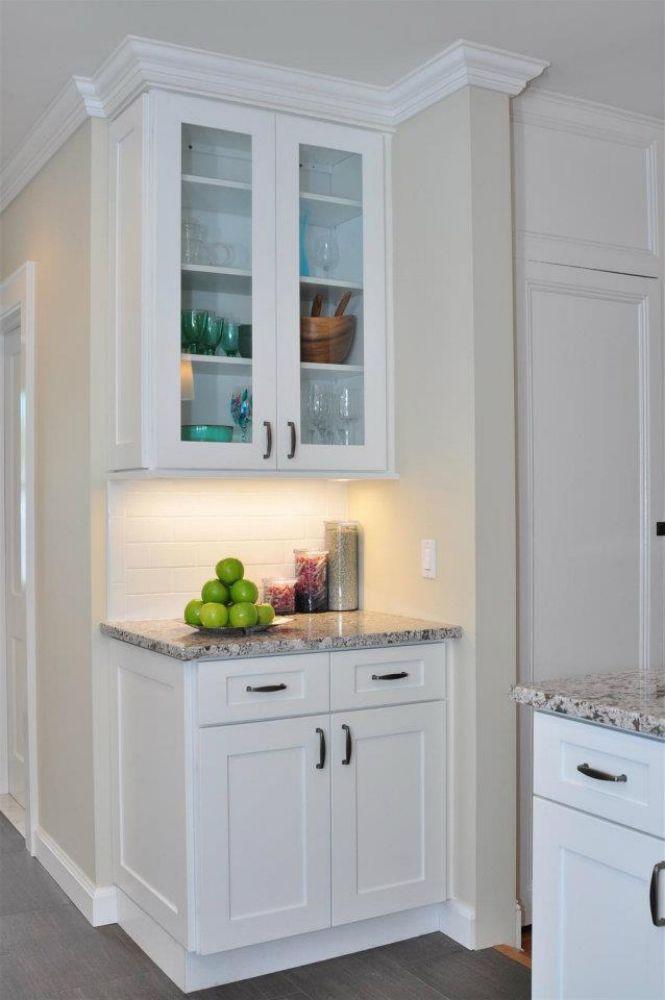Introduction To Forevermark Cabinet Collections
Forevermark Cabinetry has gained recognition in the home design industry for offering affordable, durable, and stylish cabinet lines. Among its most popular choices are the Petit Sand and Petit White collections. Both feature modern, clean designs that appeal to homeowners, interior designers, and contractors alike. However, while they may seem similar at first glance, they differ in tone, design impact, and practical application. Understanding these differences is crucial if you’re deciding which line best suits your home renovation or new construction project.
Overview Of The Petit Sand Collection
The Petit Sand cabinets are characterized by their warm, neutral beige tones that emulate the soft look of natural sand. These cabinets work especially well in spaces that aim to combine modern minimalism with an inviting, cozy atmosphere. Petit Sand’s muted, earthy hue creates a balanced foundation for kitchens, bathrooms, or other cabinetry applications, offering flexibility with darker countertops and bold wall colors.
Key highlights of Petit Sand include:
-
Warm and neutral sand-inspired color
-
Ability to blend with rustic, coastal, or transitional design styles
-
Works well in smaller spaces, giving a warm but spacious appearance
-
Versatility with both light and dark accents
Overview Of The Petit White Collection
In contrast, Petit White offers a clean, bright, and timeless aesthetic. Its crisp white finish enhances natural light and instantly gives rooms a more open and airy feel. Petit White cabinetry is a popular choice among homeowners seeking a classic yet contemporary look that pairs with virtually any décor.
Key highlights of Petit White include:
-
Pure white finish that reflects light beautifully
-
Excellent for modern, Scandinavian, or coastal interiors
-
Creates a sense of freshness and cleanliness
-
Works well in compact spaces to make them appear larger
Color Tone Comparison
The most obvious difference between Petit Sand and Petit White lies in their color tones. Petit Sand brings a subtle warmth with its beige undertones, making it perfect for spaces that want to avoid the starkness of bright white. Meanwhile, Petit White provides a sharp, luminous backdrop that enhances both natural and artificial lighting.
-
Petit Sand: Warm, inviting, cozy
-
Petit White: Clean, crisp, open
Your preference between the two will largely depend on whether you want a warmer, more grounded aesthetic or a brighter, fresher environment.
Design Flexibility And Styling
When it comes to styling, both Petit Sand and Petit White offer flexibility, but in different ways.
-
Petit Sand: Works well with natural wood finishes, stone countertops, and muted metallics like brushed nickel or bronze. It leans toward transitional and traditional spaces but can also enhance rustic or beach-inspired interiors.
-
Petit White: A go-to choice for modern and minimalist designs. It pairs seamlessly with black hardware, marble countertops, stainless steel appliances, and bold pops of color in décor. Its neutrality allows homeowners to easily switch up the surrounding color palette without changing cabinetry.
Impact On Room Size And Lighting
Cabinet color significantly influences how large or small a room feels.
-
Petit Sand: Its soft beige hue adds warmth without overwhelming smaller rooms. It does not reflect light as strongly as white but still provides a welcoming brightness.
-
Petit White: Reflects the most light, which makes it ideal for compact kitchens, condos, or bathrooms where space is limited. White cabinetry can make ceilings feel higher and rooms feel more expansive.
Maintenance And Practical Considerations
Maintenance is a critical factor when choosing cabinets.
-
Petit Sand: More forgiving when it comes to hiding smudges, fingerprints, or small stains. Its slightly darker, earthy tone makes it practical for busy households with children or pets.
-
Petit White: While beautiful, white surfaces show dirt, spills, and fingerprints more easily. Homeowners who choose Petit White may need to commit to more frequent cleaning to maintain the fresh, pristine look.
Popular Design Combinations
Both Petit Sand and Petit White pair beautifully with different countertops, backsplashes, and flooring choices.
-
Petit Sand: Looks great with quartz countertops in earthy tones, subway tile backsplashes, or warm wood flooring.
-
Petit White: Stunning with marble countertops, glossy white or glass backsplashes, and light gray or dark wood flooring for contrast.
Cost And Value Considerations
Both Petit Sand and Petit White belong to Forevermark’s Petit collection, which is designed to be affordable without sacrificing quality. Prices for both tend to be similar, with minor variations depending on market availability. The decision usually comes down to aesthetic preference rather than cost.
However, homeowners should also consider resale value. White cabinetry, such as Petit White, is universally appealing and may help increase buyer interest if you plan to sell your home. Petit Sand, while versatile, appeals more to those who prefer warmer tones.
Which One Should You Choose?
If your goal is to create a timeless, bright, and spacious look, Petit White is the clear choice. It offers unmatched versatility and works well in almost any interior style. On the other hand, if you want a warmer, cozier atmosphere with low-maintenance practicality, Petit Sand may be the better option.
Ultimately, the difference between Petit Sand and Petit White lies in how you want your space to feel—either grounded and inviting or crisp and open.
Conclusion
Both Forevermark Petit Sand and Petit White offer high-quality, stylish cabinetry that fits a wide range of design preferences. Petit Sand excels in warmth, practicality, and creating inviting environments, while Petit White shines in brightness, versatility, and timeless appeal. Homeowners should carefully consider their lifestyle, lighting, and desired aesthetic when making a choice. Regardless of which you select, both options provide the durability and craftsmanship Forevermark is known for, ensuring long-lasting beauty in your home.
Frequently Asked Questions
Q1: Is Petit White harder to maintain than Petit Sand?
A1: Yes, Petit White tends to show dirt, fingerprints, and spills more easily than Petit Sand, which makes Petit Sand more forgiving for busy households.
Q2: Which option works best for small kitchens—Petit Sand or Petit White?
A2: Petit White is generally better for small kitchens since its bright tone reflects light and makes spaces feel larger and more open.
Q3: Can Petit Sand and Petit White be combined in one kitchen design?
A3: Absolutely. Many homeowners use Petit Sand for lower cabinets and Petit White for uppers, creating a stylish two-tone look that adds depth and dimension.
Q4: Do Petit Sand and Petit White cost the same?
A4: In most cases, both options are priced similarly since they come from the same Forevermark collection. Variations may depend on suppliers or current availability.
Q5: Which has better resale value—Petit Sand or Petit White?
A5: While both add value, Petit White is often more universally appealing to potential buyers due to its classic, timeless appearance.

